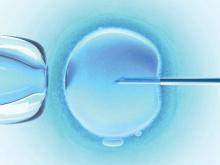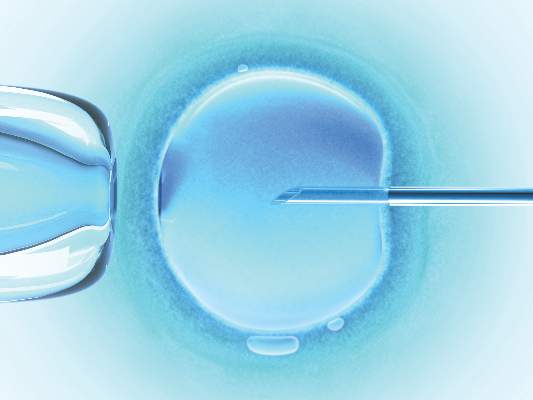User login
More than 65,000 babies were born following about 190,000 cycles of IVF and other assisted reproductive technologies in 2014, according to data from the Society for Assisted Reproductive Technology.
The report – which includes data from 375 member clinics of the Society for Assisted Reproductive Technology (SART) – shows an increase both in assisted reproductive technology (ART) procedures performed and in the number of subsequent live births, compared with 2013.
Another trend in the 2014 data is a decline in the number of multiple births, due largely to increased use of single-embryo transfer.
Singleton births reached 78% from the 2014 cycles, up from 75.5% the previous year. Single-embryo transfer cycles accounted for 27.2% of all cycles in 2014, compared with 20.6% in 2013.
“The latest data reflect the success of our efforts to improve ART practice from ovarian stimulation through transfer,” Dr. Bradley Van Voorhis, SART president, said in a statement. “We are proud of the progress we have made improving live birth rates – the true measure of a cycle’s success – and in improving maternal and child health outcomes for our patients through lower multiple birth rates.”
Read the national summary report for SART clinics here.
On Twitter @maryellenny
More than 65,000 babies were born following about 190,000 cycles of IVF and other assisted reproductive technologies in 2014, according to data from the Society for Assisted Reproductive Technology.
The report – which includes data from 375 member clinics of the Society for Assisted Reproductive Technology (SART) – shows an increase both in assisted reproductive technology (ART) procedures performed and in the number of subsequent live births, compared with 2013.
Another trend in the 2014 data is a decline in the number of multiple births, due largely to increased use of single-embryo transfer.
Singleton births reached 78% from the 2014 cycles, up from 75.5% the previous year. Single-embryo transfer cycles accounted for 27.2% of all cycles in 2014, compared with 20.6% in 2013.
“The latest data reflect the success of our efforts to improve ART practice from ovarian stimulation through transfer,” Dr. Bradley Van Voorhis, SART president, said in a statement. “We are proud of the progress we have made improving live birth rates – the true measure of a cycle’s success – and in improving maternal and child health outcomes for our patients through lower multiple birth rates.”
Read the national summary report for SART clinics here.
On Twitter @maryellenny
More than 65,000 babies were born following about 190,000 cycles of IVF and other assisted reproductive technologies in 2014, according to data from the Society for Assisted Reproductive Technology.
The report – which includes data from 375 member clinics of the Society for Assisted Reproductive Technology (SART) – shows an increase both in assisted reproductive technology (ART) procedures performed and in the number of subsequent live births, compared with 2013.
Another trend in the 2014 data is a decline in the number of multiple births, due largely to increased use of single-embryo transfer.
Singleton births reached 78% from the 2014 cycles, up from 75.5% the previous year. Single-embryo transfer cycles accounted for 27.2% of all cycles in 2014, compared with 20.6% in 2013.
“The latest data reflect the success of our efforts to improve ART practice from ovarian stimulation through transfer,” Dr. Bradley Van Voorhis, SART president, said in a statement. “We are proud of the progress we have made improving live birth rates – the true measure of a cycle’s success – and in improving maternal and child health outcomes for our patients through lower multiple birth rates.”
Read the national summary report for SART clinics here.
On Twitter @maryellenny

